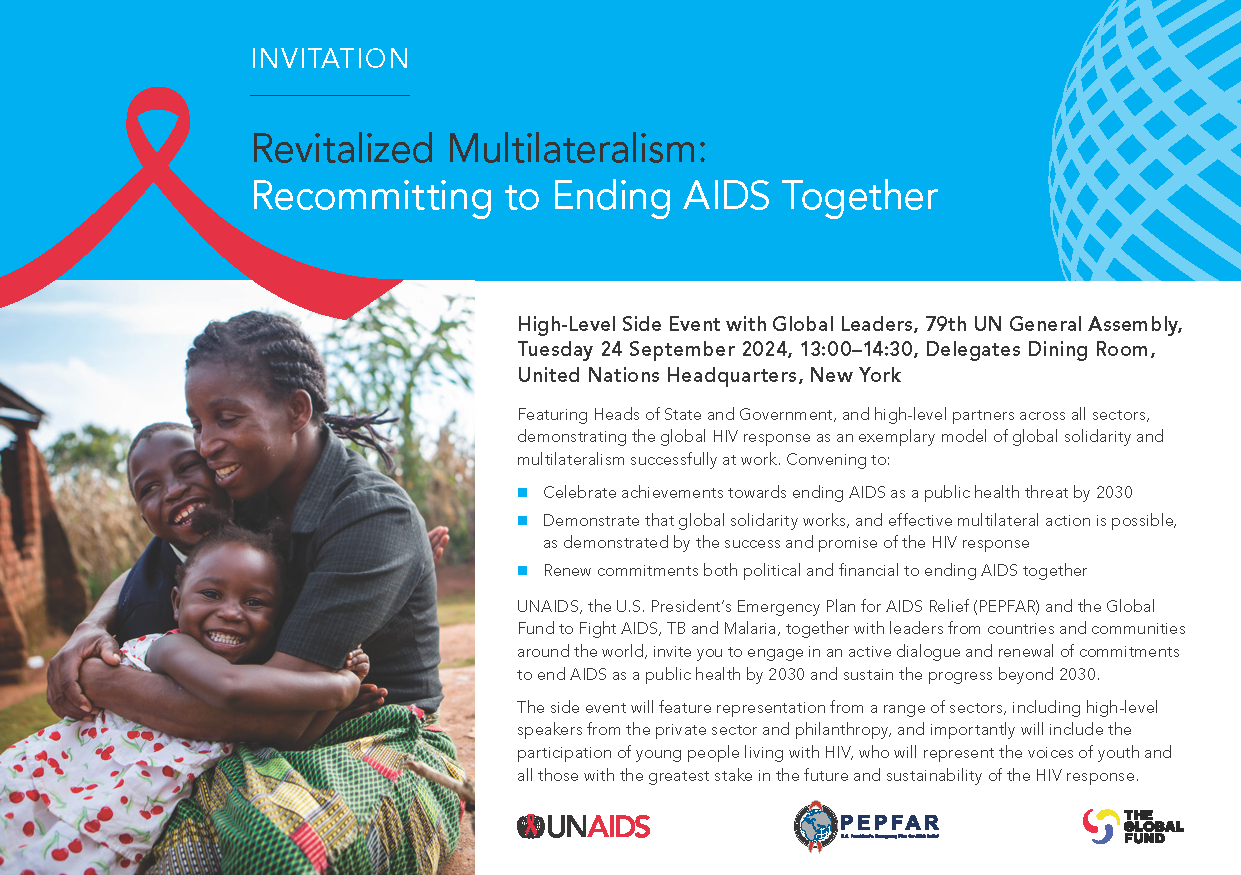As the world convenes for the Summit of the Future at the United Nations General Assembly (UNGA) in September, leaders have the opportunity to transform the prospects of humanity by reinvigorating multilateral cooperation.
At a moment when the world is off track on meeting its shared goals, and when cooperation is fraying, the HIV response provides a beacon of hope and a source of practical solutions on effective ways to tackle common challenges. It has from a once a seemingly insurmountable crisis achieved extraordinary progress through people-centered multilateral cooperation. That over 30 million people living with HIV now have access to
life-saving treatment, and that the end of AIDS as a public health threat could be realised this decade stands as amongst the greatest public health successes of our time. They demonstrate what is possible when we work together, let science guide our actions, invest adequately, protect everyone’s rights, address inequalities, and empower communities to lead. The policies and systems that help advance the end of AIDS also serve to power progress on all the Sustainable Development Goals and to secure a safer, fairer world for all. The AIDS movement is an extraordinary asset to help the world move from crisis to constructive cooperation.
Strengthening people-centered cooperation is also vital to ensure that the gains made in the AIDS response are sustained. Progress, while monumental, is not universal.
Inequalities in access to prevention, treatment, and care persist. We still need urgent action to prevent the 1.3 million new infections every year. The epidemic is worsening in several countries, with three regions—the Middle East and North Africa, Latin America, and Eastern Europe and Central Asia—experiencing increases in new cases. Prevention technologies like PrEP are not reaching those who need them most, and stigma and discrimination continue to be significant barriers to accessing HIV treatment and care. A funding gap is holding back the HIV response in low- and middle-income countries.
A huge prize is in sight: by addressing the inequalities holding back progress in HIV, and accelerating HIV prevention and treatment efforts, we can ensure the end of AIDS as a public health threat by 2030, and the sustaining of this achievement for the future. What we need now is the courage and collaboration from global leaders to make the bold choices that will save millions of lives, overcome the deadliest pandemic, and ensure that tens of millions of people living with HIV can lead long and fulfilling lives.
By making serious investments, enacting necessary policy reforms, and working in partnership with each other and with civil society, world leaders can end AIDS as a public health threat and advance progress on all the Sustainable Development Goals.












